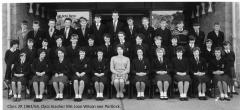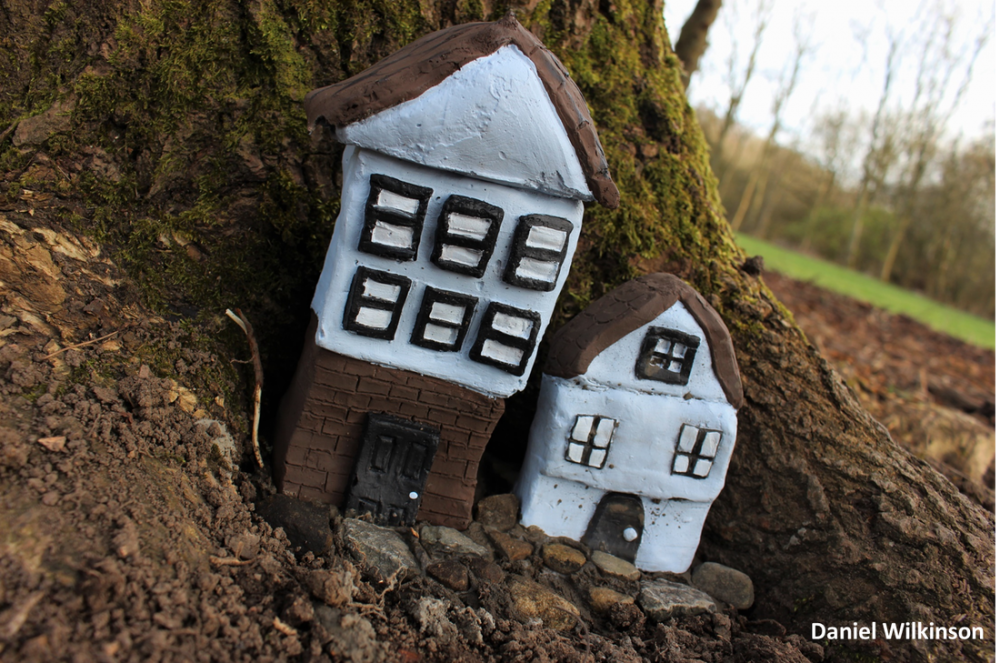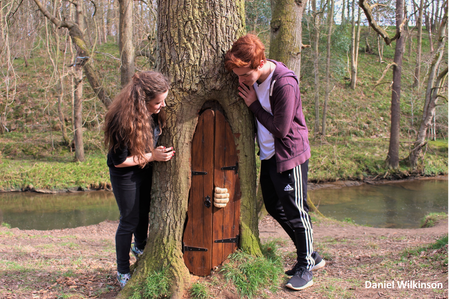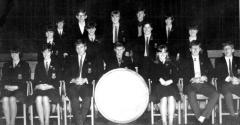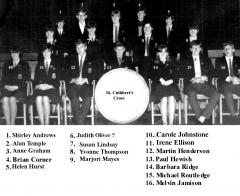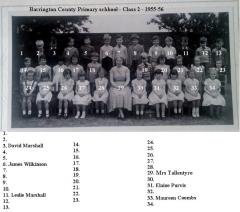
Alan Edgar (Eggy1948)
Supporting Members-
Posts
6,835 -
Joined
-
Last visited
-
Days Won
343
Content Type
Forums
Gallery
Events
Shop
News
Audio Archive
Timeline
Everything posted by Alan Edgar (Eggy1948)
-
From the album: Westridge School - End of term class photos
Photo supplied by Mel Douglas on Bygone Bedlington Facebook site. -
From the album: Westridge School - End of term class photos
Photo supplied by Mel Douglas on Bygone Bedlington Facebook site. -
From the album: Westridge School - End of term class photos
Photo supplied by Martin Henderson -
From the album: Westridge School - End of term class photos
Photo supplied by Martin Henderson -
From the album: Westridge School - End of term class photos
Photo supplied by Martin Henderson -
From the album: Westridge School - End of term class photos
Photo supplied by Martin Henderson -
Copied from the Home Page :- 'The young people of Leading Link have been working extremely hard together with professional artists to provide some permanent amazing art installations in Plessey Woods and we are nearly there! In partnership with NCC and with funding from the Sita Trust and the Foyer Federation, the young people have created pieces of eye-catching art such as a Quarry Henge, willow wonderland and an imaginative environment for Hobbits and Fairies around a mile long adventure!' What is there to do? There are many things to do in the woods other than looking at the installations. Around the trail you will find QR Codes that you can scan to see how each installation was made! Upcoming events: Grand Opening of the trail (April 2nd 1-5pm) Lantern Trail (April 2nd 7pm-8:30pm Making lanterns from 1pm-5pm) Lantern Making (April 5th 6pm-7pm) Lantern Trail (April 5th 7pm-8:15pm) Lantern Trail (April 5th 7:45pm-9pm) Lantern Making (April 7th 6pm-7pm) Lantern Trail (April 7th 7pm-8:15pm) Lantern Trail (April 7th 7:45pm-9pm) Lanterns cost £2 to make unless you are a Children's University passport holder. http://plesseywoodstrail.weebly.com/
-
From the album: Westridge School - End of term class photos
Posted by Maureen Quait, nee Halloran, on the Bedlington Remembered Facebook site. -
From the album: Westridge School - End of term class photos
westridge 3 was the tag with this photo when first posted on the Bygone Bedlington site -
From the album: Westridge School - End of term class photos
-
From the album: Westridge School - End of term class photos
-
From the album: Westridge School - End of term class photos
-
Anybody any objections to me gathering up the end of term class photos, with & without names, that have been posted on various Bedlington sites (many by Foxy ) and storing them all together in the Gallery along with the other albums in the 'Historic Bedlington' category?
-
Maggie, are you related to Eddison and this has been passed down by generations of your family? or was that for an electric poss-tub? or was that for you first holiday abroad in 1956? Even me dad, a typical Scotsman, didn't have one like that in his 1940's box of old plugs - two strand wire - etc. that he was sure would come in useful one day! Think he eventually used the wire to tie up staked garden plants and veg.
-

Unable to load photos
Alan Edgar (Eggy1948) replied to Alan Edgar (Eggy1948)'s topic in Chat Central
Photo, 96KB, loaded into Gallery, without a problem. I'm singing, and dancing in the rain - doo bee doo do, doo be doo be doo do.................. -

Barrington CP Class2 - 1955-56 with some names
Alan Edgar (Eggy1948) posted a gallery image in Historic Bedlington
From the album: Barrington County Primary School
Photo post in Bygone Bedlington by James Wilkinson -

Unable to load photos
Alan Edgar (Eggy1948) replied to Alan Edgar (Eggy1948)'s topic in Chat Central
John - are you saying .....been like that since website changes = since the site went over to the new format on 12/01/2016 or have there been additional changes, since the site went to the new format? I have uploaded photos since the new format was introduced, in both the Gallery and Discussion Topics but everything I have tried to upload over the last two days has failed with :- "There was a problem processing the Uploaded file. 7". I assume threegee is working on it so I will bide my time. If not then I will ask Maggie to sort the administrators out! -
All attempts to upload photos from my Desktop PC - Windows Vista, into any Topic, or the Gallery, fail with :- "There was a problem processing the Uploaded file. 7" Tried different file types eg. .png - .jpg, and different sizes, all under 1MB all fail with the same.
-
I made many attempts to load a couple of photos - png & jpg - from the Punch Drunk site but ALL failed - "There was a problem processing the Uploaded file. 7"
-
Link to the Punch Drunk web site is :- http://punchdrunkcomedy.co.uk/ Extract from the web site :- PUNCH-DRUNK 4 TO HAVE REPEAT NIGHT! BEDLINGTON – We’re coming for you! We can confirm that due to popular demand for the SOLD-OUT Punch-Drunk 4 at Blyth on the 20th of this month, we will be adding an additional night in Bedlington the very following evening at Netherton Club (Tuesday 21-April-15). The venue is the same size as Blyth’s Side-Club base, and promises to be a packed house to rival that of Blyth’s. The launch event will feature a replay of Punch-Drunk 4 featuring all of the same acts, so if you missed out on Blyth tickets because of how fast they sold out, you can get the exact same experience on the Tuesday an inexpensive taxi ride away. If you’ve never been to a Punch-Drunk event before, you’re in for a treat. Our events are remapping the social calendar…in the midst of an ailing social scene where bars and clubs are dying off, we are calling on communities to united behind a permanent date in the monthly calendar where we vow, friends and family alike, to reconvene at the same place and time every month, to reconnect against a back-drop of laughter. (The Blyth events have been sensational so far and have received national acclaim winning “BEST LARGE COMEDY-VENUE IN THE NORTH” at the recent Chortle awards!) The laughter will be provided by the very best comics the international stage has to offer! Punch-Drunk 4 will feature the star-studded line-up of acts as follows: Host / Compere: Kai Humphries Mark Nelson Philberto Andrew Stanley Scroll down for full previews of all of those acts! Tickets are available for reservation with immediate effect through all the following channels: Simply Text or Call 07738663379 with your full name and ticket requirements Inbox the Punch-Drunk Facebook Page Online: - See more at: http://punchdrunkcomedy.co.uk/event/punch-drunk-4-bedlington-launch/#sthash.sxarO5Go.dpuf
-
Bayardm - I am not involved with the Bedlingtonshire Local History Society but I do remember Maggie posting a 2015-16 program - see photo at the end of my message. There is a contact number & email address for the Secretary, Barry Mead, on the ANLHS web page :- Association of Northumberland Local History Societies (ANLHS) Member Societies/Groups & Organisations Bedlingtonshire LHS The society was founded in 1968. Meetings are held from September to November and from January to April on the last Monday of the month at 7.30pm in Bedlington Evangelical Church. There is no membership fee but £1 is charged for each meeting. For further information tel. : 01670 861180 Or contact Barry Mead, Secretary by emailing bas.mead@google.mail.com. However in a posting 'History Society' Maggie posted :- ".................For details of Where and What is involved phone - 01670 820088" And within that same posting was an entry with the 2015-16 program dates with Monday 28/03/2016 scheduled as 'Blythe and Tyne Railway System - John Riley' :-
-
Now I understand, but I will still secretly giggle to myself as I imagine a little old lady, on her tiptoes, with the wrapper off her Werther's Original in her out stretched hand and cursing the council and a sweet and polite way old ladies are supposed to!.
-
So they havn’t won a game this month, though they had some shots at Leicester This Sunday their luck will change, and Mackems will gan yem te fester.
-




